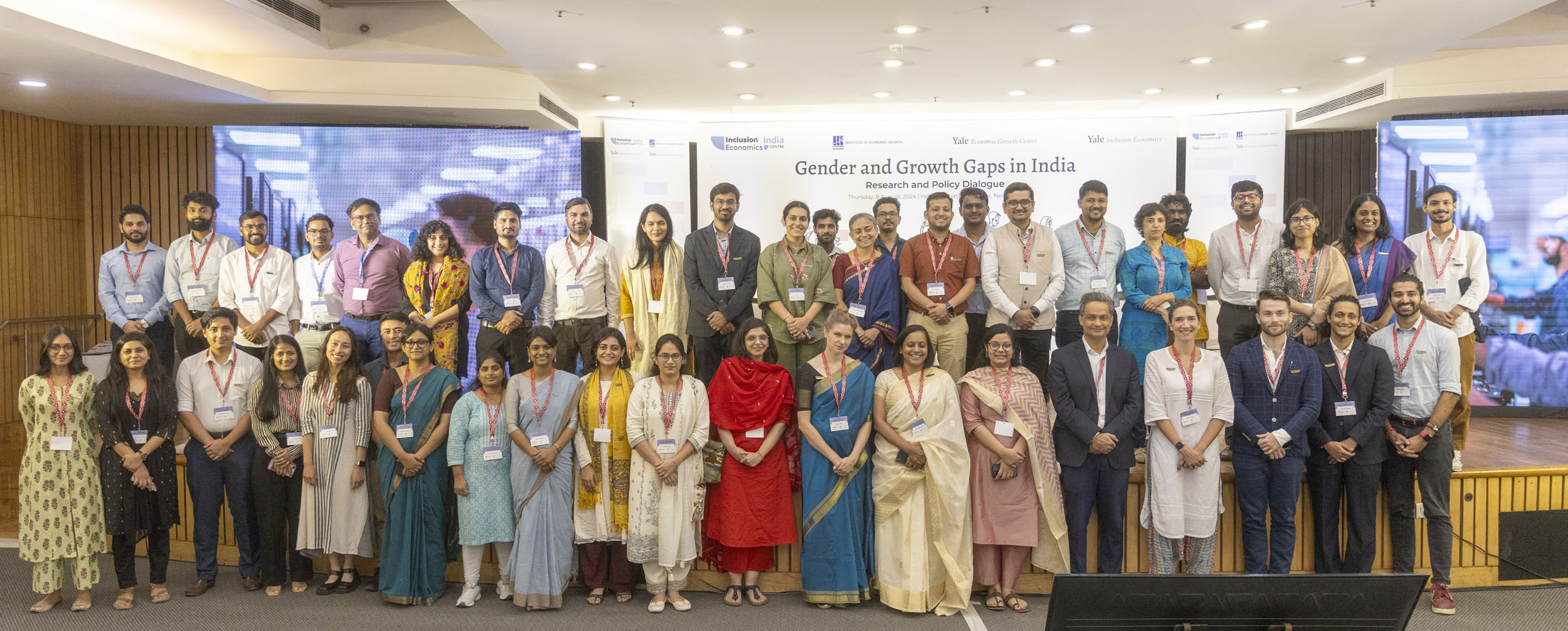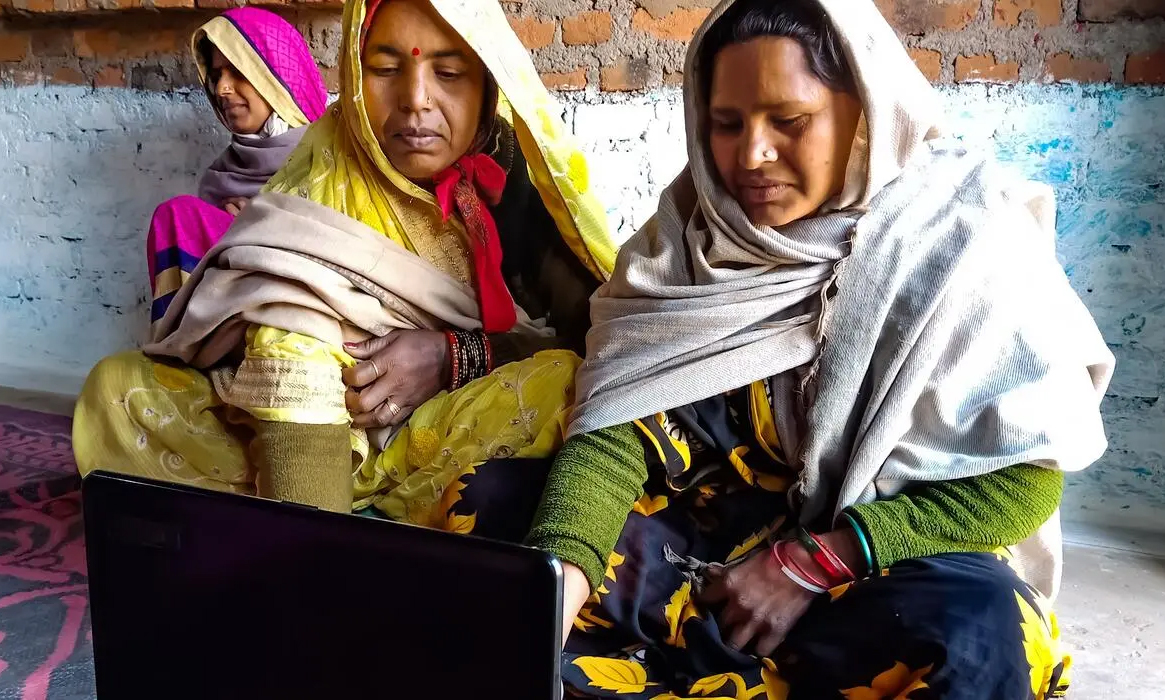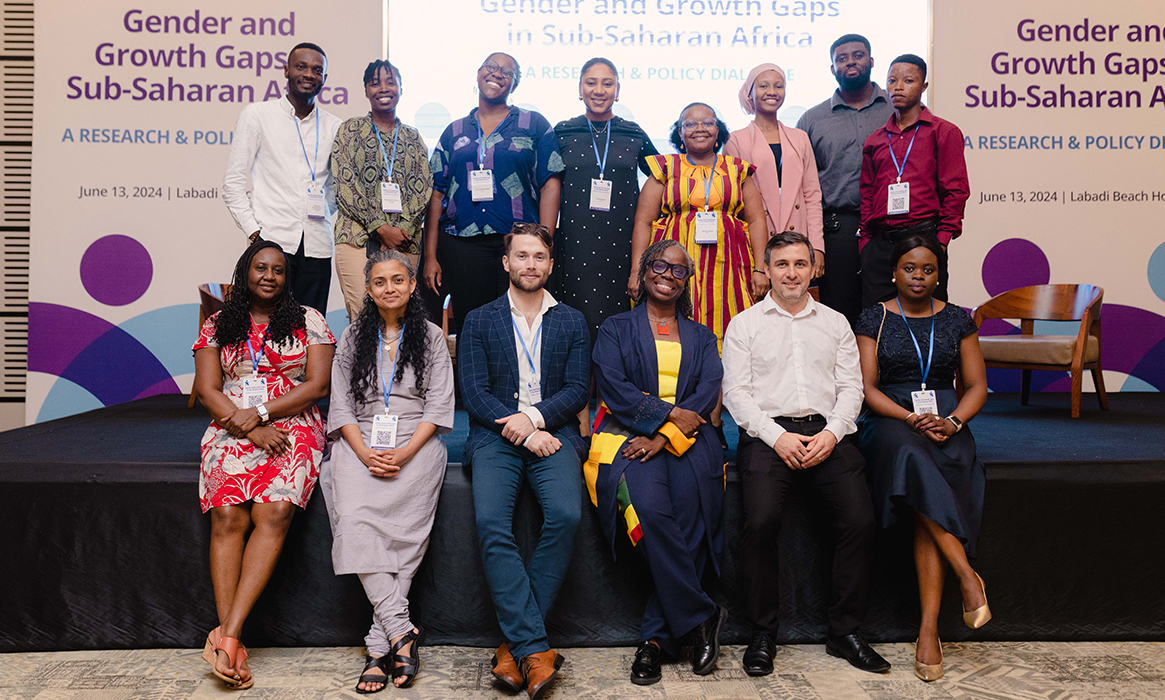The Global Gender Distortions Index Measures Losses in Global Economic Growth
In a new NBER Working Paper, the Global Gender Distortions Index (GGDI) links changes in gender gaps in the labor market to productivity growth through improvements in the allocation of women’s talent. The GGDI measures how much an economy has grown, or could grow, from improvements in women’s labor market opportunities.

How much could an economy grow from improvements in women’s labor market opportunities?
Around the world, there are many settings where women are excluded from market activity— in entirety or in specific domains. Would those economies do better if women were integrated on an equal footing into labor markets and the allocation of non-market work was less gendered? Do gender inequalities in the labor market impede productivity?
Historically in the United States, policies that reduced labor market barriers for women and African Americans have led to significant increases in productivity and economic growth by reducing the misallocation of talent (Hsieh et al. (2024), Econometrica). But how can today’s low- and middle- income countries (LMICs) evaluate the economic dividends of progress toward equal opportunity? How can policy makers identify barriers within their labor markets that need to be prioritized? And how much economic progress is left on the table by the existence of gendered labor market distortions?
As part of the Economic Growth Center’s (EGC) Gender and Growth Gaps project—which brings together economists to investigate causes and consequences of gender inequality—the Global Gender Distortions Index (GGDI) links changes in gender gaps in the labor market to productivity growth through improvements in the allocation of women’s talent. The GGDI measures how much an economy has grown, or could grow, from improvements in women’s labor market opportunities.
In previous work (Agte et al. (2024)), researchers associated with the Gender and Growth Gaps project investigated the reverse relationship, namely whether growth contributes to gender equality.
In a new NBER Working Paper, Goldberg, Gottlieb, Lall, Mehta, Peters, and Lakshmi Ratan build a framework to quantify the productivity losses of gendered misallocation across the globe. The index they develop in this paper highlights that women often do not make the choices that best match their skills and preferences because of 1) distortions on the demand side (e.g. discrimination by employers) that lead to a wedge between the wages they receive and the value of what they produce; and 2) distortions on the supply side that may reflect among other things social norms, safety concerns, lack of child care options, and limit women’s ability to participate in the labor market.

NBER Working Paper
The Global Gender Distortions Index (GGDI)
Authors: Pinelopi K. Goldberg, Charles TL. Gottlieb, Somik Lall, Meet Mehta, Michael Peters, & Aishwarya Lakshmi Ratan
“From a policy perspective one relevant question is, can we trust growth to close gender gaps? If so, perhaps we shouldn’t worry— from a purely economic standpoint—about gender discrimination and other gender distortions, because growth is going to take care of them. But looking at recent trends with better data—the World Bank’s Global Jobs Indicator (JOIN) database—and using many different metrics of women’s economic standing, we get a nuanced answer to the above question. What emerged from our analysis was, essentially, that there is no clear takeaway. If you look over time across countries, there’s no clear relationship between growth and gender gaps—The relationships vary a lot by region.”
—Pinelopi (Penny) Koujianou Goldberg, the Elihu Professor of Economics and Global Affairs and an EGC affiliate
The GGDI is computed by using observed differences in women’s wages, labor supply, and employment across job types (formal versus informal) to derive an estimate of economy-wide productivity losses or gains. By quantifying growth losses stemming from gender inequality and identifying their sources, the GGDI allows policymakers to quantify the economic costs of barriers in labor markets, and make comparisons across time and space that can inform policy decisions.
“Integrating women into the labor market is widely believed to be beneficial not only for women but for the entire economy,” explains Koujianou Goldberg, “The GGDI operationalizes this idea. It is the product of a successful collaboration between Yale’s Economic Growth Center and the World Bank, and we hope that it will help guide policy decisions—especially in developing countries where gender gaps in the labor market remain significant.”

The GGDI was applied in a proof-of-concept exercise analyzing Indian states for 2018. The results showed that both demand distortions and supply distortions are negatively related to state-level economic development. Equalizing distortions across Indian states could raise state-level productivity by up to 15 percent.
This proof-of-concept analysis focusing on Indian states was presented at a research-policy dialogue organized by EGC in New Delhi in August 2024, in partnership with the Institute of Economic Growth and Inclusion Economics India Centre. The World Bank’s 2024 World Development Report featured the GGDI, highlighting how reduced gender inequality could enable middle-income countries experiencing stagnating growth to transition to higher income levels. The GGDI complements the World Bank’s Women, Business, and the Law (WBL) index, which measures formal legal barriers to women’s labor market participation. The GGDI addresses the broader, de facto constraints that result in measurable economic losses.
The project is expanding through a partnership with Charles Gottlieb, Associate Professor of Economics at the Aix-Marseille School of Economics. Together, the researchers are applying the GGDI to approximately 45 countries over multiple years, using data from the Harmonized World Labor Force Surveys (HWLFS). The team is also exploring opportunities with the World Bank to transition the GGDI from a proof of concept to a widely used and continuously updated application.
“Working on the GGDI project has been a very rewarding experience. The proof-of-concept exercise on Indian states unraveled substantial heterogeneity in the level of gendered labor market distortions across states. I attended the workshop in New Delhi where these results were presented and discussed. As a PhD student in the early stages of my program, this experience showcased how good research can influence discussions on important policy relevant topics.”
—Meet Mehta, Yale Economics PhD Student


Research by Pinelopi Goldberg, Charles Gottlieb, Somik Lall, Meet Mehta, Michael Peters, Aishwarya Lakshmi Ratan.
An earlier version of this article appeared in the 2024 Yale Economics Magazine.